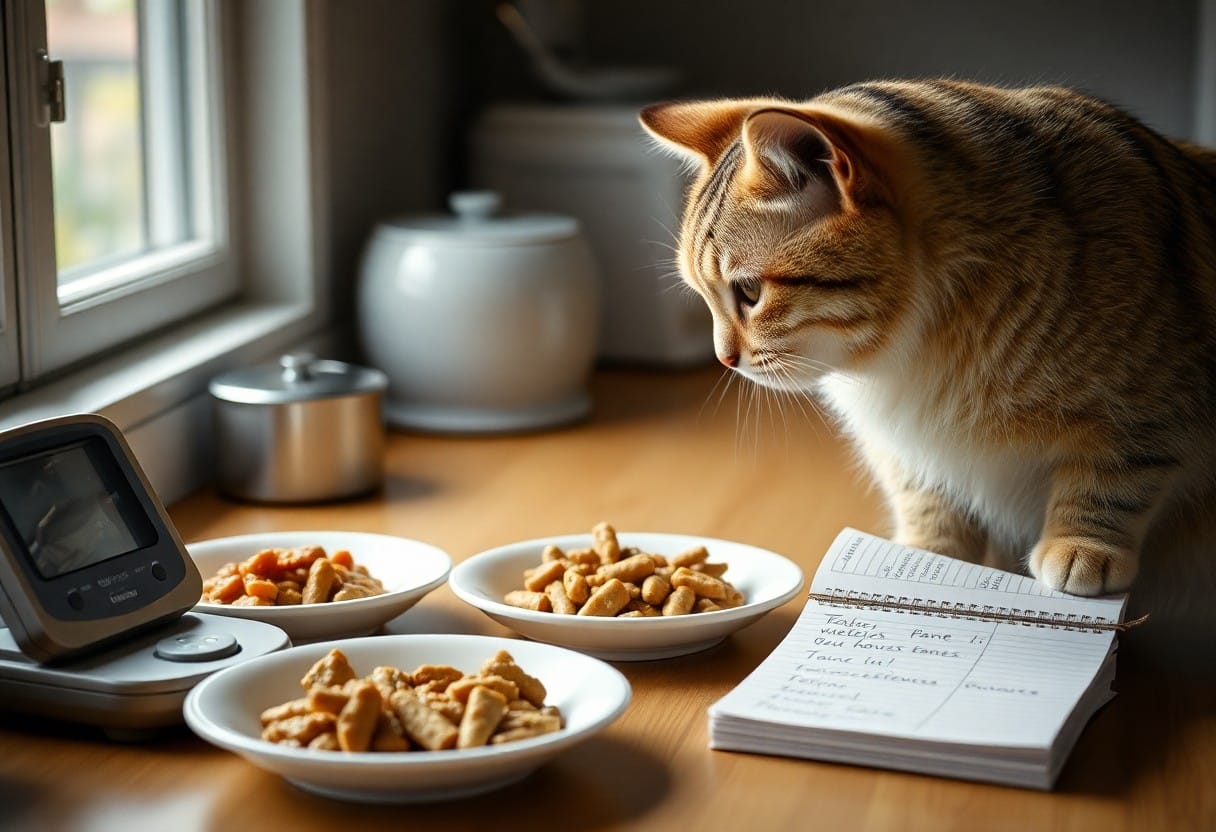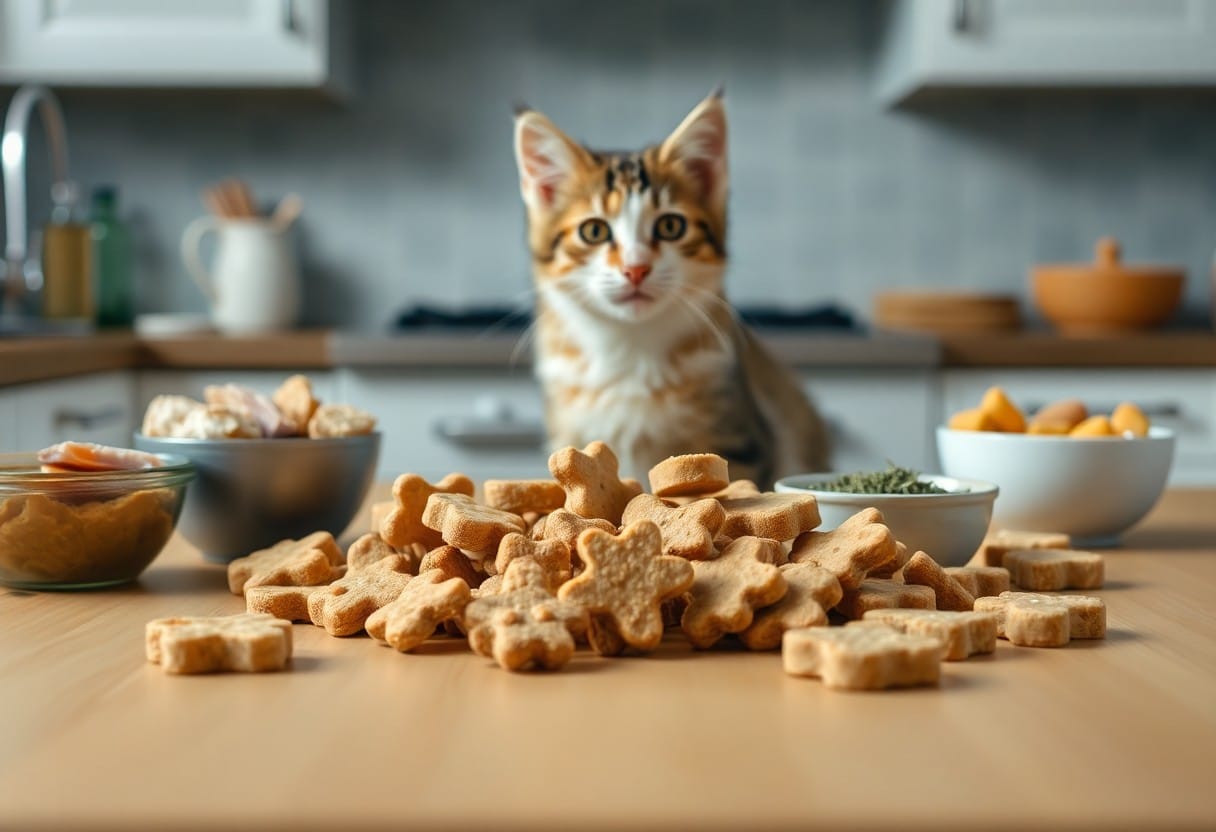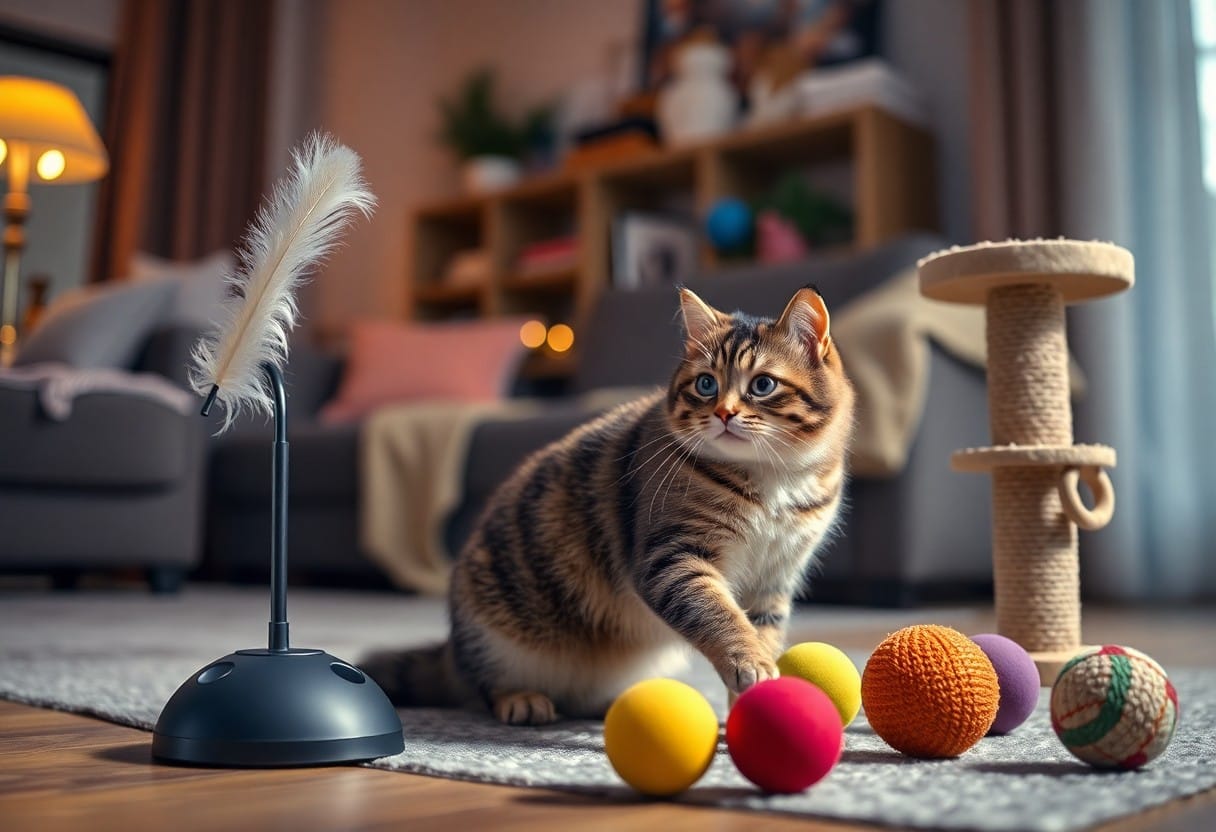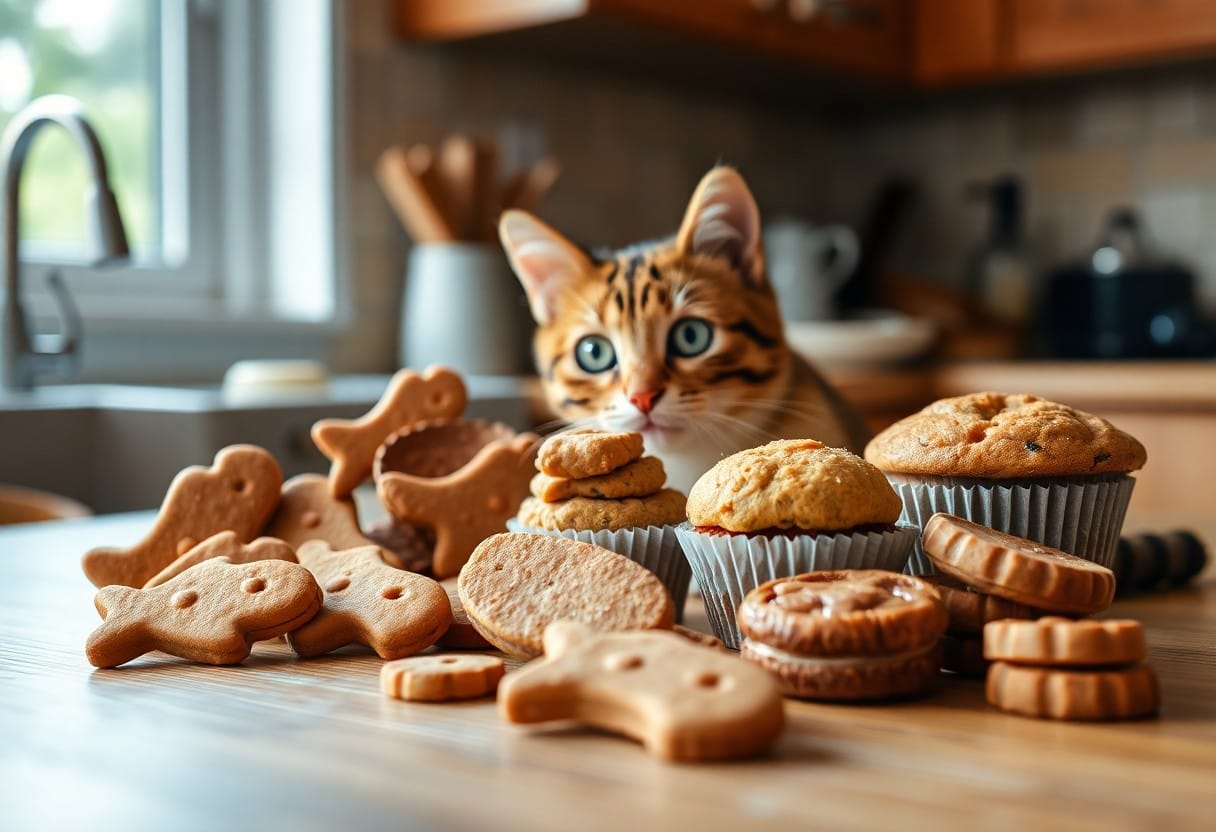Over time, understanding your cat’s dietary needs and preferences can transform your kitchen into a haven for nutritious homemade meals that even the pickiest eaters will love. By incorporating high-quality ingredients and avoiding harmful additives, you can create wholesome dishes that not only cater to their taste buds but also promote their health. This guide will walk you through the necessarys of crafting delightful cat delicacies that ensure your feline friend thrives while enjoying every bite. Let’s explore the art of nourishing your pet in a way that celebrates their unique palate!
Key Takeaways:
- Utilize high-quality, protein-rich ingredients such as chicken, fish, and turkey, which cater to cats’ natural dietary preferences and help in maintaining their health.
- Incorporate a variety of textures and flavors to keep meals interesting; mixing wet and dry foods along with added garnishes can entice even the pickiest eaters.
- Pay attention to individual dietary needs and sensitivities; experimenting with different recipes and keeping track of what your cat enjoys can lead to discovering beloved dishes.
The Science Behind Feline Nutrition
Understanding feline nutrition involves recognizing the unique dietary needs of your cat. Cats are obligate carnivores, meaning their bodies require animal-based proteins to thrive. A well-rounded diet not only supports overall health but also boosts energy levels and promotes a shiny coat. By staying informed about the latest research on feline health and nutrition, you can ensure your delicacies are not only tasty but also beneficial for your furry friend.
Essential Nutrients for Cats
Felines require a range of important nutrients to maintain optimal health. Key components include proteins, which supply amino acids like taurine—vital for heart function and vision. Fats provide energy and support skin and coat health, while vitamins and minerals play roles in metabolism and immune function. Additionally, hydration is crucial; always provide fresh water alongside their meals.
Common Dietary Myths and Misconceptions
Many myths surround feline nutrition that can lead to unhealthy feeding practices. One prevalent misconception is that cats are just as adaptable in their diets as dogs; in reality, they thrive on a meat-heavy diet and struggle to process carbohydrates. Furthermore, the idea that milk is a suitable treat for adult cats can be misleading, as many cats are lactose intolerant.
Dispelling dietary myths is vital to improving your cat’s health. For instance, the belief that a grain-free diet is universally better does not hold true for all cats, as some can benefit from certain grains. Similarly, overemphasis on homemade diets without proper guidance can lead to nutritional imbalances. Seeking professional advice, like from a veterinarian or a pet nutritionist, ensures that your furry companions receive the right balance of nutrients tailored to their specific needs.
Tailoring Ingredients to Fussy Tastes
Navigating the culinary preferences of picky cats requires a blend of creativity and knowledge. A deep understanding of their taste buds will help you create personalized dishes that they can’t resist. Observing your cat’s favorites and adjusting the ingredients accordingly can transform mealtime into a gourmet experience. Incorporating a variety of flavors and textures will ensure each recipe is as delightful as it is nutritious, catering to those discerning palates.
High-Quality Protein Sources Cats Crave
Providing your cat with high-quality protein sources is imperative for maintaining their overall health and satisfying their fussy taste preferences. Lean meats such as chicken, turkey, and fish, particularly salmon, are excellent choices filled with amino acids crucial for their energy and growth. You might choose to mix shredded protein in with their meals or even try serving it as a standalone treat. Felines naturally gravitate towards fresh, human-grade protein, which makes them more inclined to enjoy the meals you create.
Incorporating Flavors and Textures
Felines are notoriously finicky about the flavors and textures in their food, often preferring dishes that provide an engaging sensory experience. To keep your cat’s interest, use a variety of ingredients that introduce unique tastes and mouthfeels. Blending wet and dry foods together not only adds excitement but provides different textures—the soft, moist chunks invite chewing, while the crunchy bits keep mealtime dynamic. Experimenting with small amounts of cat-friendly herbs, such as catnip or parsley, can also elevate the dish and make it even more appetizing for your discerning kitty.
Creative Recipe Formulations for Picky Palates
Incorporating a mixture of flavors and textures will entice even the pickiest cats. Consider blending enticing ingredients like flaked tuna, shredded chicken, and pureed pumpkin for a well-rounded, savory experience. Try adding a dash of low-sodium chicken broth to enhance the aroma, as cats are often attracted by strong scents. You can also experiment with different cooking methods, such as baking or slow-cooking, to discover unique textures that your feline friend may enjoy.
Simple Homemade Delicacies to Try
Creating homemade treats is more straightforward than you might think. For example, a delightful mixture of cooked chicken, carrots, and peas can serve as a nutritious meal or snack. Another option is to blend together cooked fish with sweet potatoes to form bite-sized treats. These simple recipes allow you to control the ingredients while providing a nutritious and appealing option for your feline companion.
Utilizing Supplementation Wisely
Selecting the right supplements can elevate your cat’s diet, making their meals not only tastier but also nutritionally balanced. Cat-friendly supplements such as Omega-3 fatty acids, probiotics, or taurine enhance the flavor profile and promote overall health. Always consult with your veterinarian to tailor supplementation based on your cat’s specific needs and weight, ensuring you create a delicacy that meets their dietary requirements.
When choosing supplements, focus on high-quality products specifically designed for cats. For example, a fish oil supplement could improve coat shine and skin texture, while probiotics can aid digestive health. It’s advisable to introduce each supplement gradually to assess your cat’s acceptance and reaction. Adding just a sprinkle of these supplements to your homemade creations not only boosts health benefits but can also enhance flavors that tempt even the most discerning cats.
The Art of Presentation: Making Meals Appealing
Creating an inviting presentation elevates your cat’s dining experience from mundane to remarkable. Cats are visual creatures, so how you arrange their meals truly matters. Utilize vibrant, fresh ingredients and consider serving in unique dishes that catch their eye. A sprinkle of catnip on top or a playful garnish can add intrigue and enhance their interest, ensuring your furry friend looks forward to mealtime with anticipation.
Plating Techniques That Entice Felines
Explore various plating techniques to captivate your feline’s attention. Layering ingredients not only creates texture but also visually intrigues. Using shallow bowls or dishes allows your cat to better access the food, while elevating certain elements, like meat or fish, can create an appealing dimension. Don’t shy away from incorporating colorful vegetables or fresh herbs that can catch your cat’s eye. Even the arrangement can make a difference—artfully scattering dry kibble or arranging wet food into a fun shape can pique their curiosity.
Enhancing Aroma and Texture
The scent and mouthfeel of a meal play a significant role in your cat’s willingness to try it. Use ingredients with strong aromas, such as fish, chicken, or beef broth, to entice their senses. Incorporating crunchy elements with softer textures can create an exciting contrast that keeps mealtime stimulating. For instance, mixing in finely chopped meats with a puree can successfully balance both texture and flavor, encouraging your cat to dig in.
Enhancing aroma and texture is all about balance and creativity. Cats possess a keen sense of smell, so utilizing pungent ingredients like salmon or tuna can make meals irresistible. Combining textures adds an engaging sensory experience; for example, mixing shredded chicken with a creamy pate can stimulate their interest and provide a satisfying mouthfeel. Additionally, heating the food slightly can amplify the aroma, drawing your cat in like a magnet. Experiment with herbs like rosemary or thyme, which can not only elevate flavor but also introduce a bouquet of scents that makes meals even more irresistible.

Testing and Adjusting Recipes Based on Feline Feedback
Feedback from your discerning feline is invaluable in creating the purr-fect recipe. Observing your cat’s reactions offers insights into their preferences, allowing you to fine-tune flavors and ingredients. Keep a notebook handy to jot down notes on what they seem to enjoy or reject, and be flexible—adjusting recipes based on this feedback is key to keeping meal times exciting and satisfying for your furry friend.
Observational Strategies for Understanding Preferences
Utilizing observational strategies can help you decode your cat’s tastes, such as noting the level of enthusiasm when presented with new dishes. Pay attention to how quickly they finish their meals, their body language, and even little behaviors like pawing at specific ingredients. By monitoring these factors, you can identify which flavors they relish and which ones they prefer to leave untouched.
Modifying Recipes for Optimal Enjoyment
Once you gather feedback from your feline, modifying recipes becomes an enjoyable process. You might decide to alter ingredient ratios, substitute proteins, or add enticing flavor boosts like a sprinkle of catnip. For example, if your cat snubs a fish-based recipe, consider replacing it with chicken or introducing a new vegetable. Tailoring your recipes according to your cat’s preferences ensures every meal is an anticipated delight.
Utilize your observations to experiment with texture as well; some cats might be in the mood for creamy, while others prefer chunky meals. If your cat shows a preference for gravy-based dishes, incorporating broth can enhance the flavor and moisture, making it irresistible. Transitioning slowly by mixing a new ingredient with their favorite dish helps in gauging their response while allowing them to adjust. Ultimately, fine-tuning is an art, and with every attempt, your culinary creations will become even more enjoyable for your beloved kitty.
To wrap up
Presently, crafting nutritious cat delicacies that even fussy felines adore involves understanding their dietary needs while being creativity in the kitchen. You can incorporate high-quality proteins, fresh vegetables, and necessary nutrients to create enticing meals. Experimenting with flavors and textures will help you find combinations that entice your cat’s palate. By being attentive to your cat’s preferences and dietary restrictions, you can prepare meals that keep them healthy and happy. Ultimately, your effort in making appealing dishes will strengthen the bond between you and your beloved pet.
FAQ
Q: What ingredients are best for creating nutritious cat delicacies?
A: To create nutritious cat delicacies, consider using high-quality protein sources such as chicken, turkey, or fish as the main ingredient. Additionally, include vegetables like carrots or peas in small amounts for added vitamins and minerals. Cats also benefit from healthy fats; incorporating fish oil or chicken fat can enhance flavor and provide important fatty acids. It is also important to include taurine, an amino acid critical for feline health, which can be included in the form of supplements or by using whole animal protein sources.
Q: How can I make cat food appealing to picky eaters?
A: To entice picky eaters, focus on the texture and aroma of the food. Many cats prefer food that is soft and moist, so incorporating wet ingredients or broths can help. You might also experiment with different forms, such as pâté or shredded textures, to see what your cat prefers. Additionally, enhancing flavor with natural additives like chicken or beef broth can increase palatability. Offering a variety of flavors and rotating options periodically can keep mealtime exciting for your fussy feline.
Q: How often should I change the recipes for my cat’s meals?
A: Changing your cat’s meal recipes can be beneficial, as it introduces new flavors and nutrients, reducing the chances of food boredom. A good approach is to rotate recipes every few weeks while ensuring that each meal is well-balanced and meets your cat’s dietary needs. On the other hand, if your cat seems to have a favorite recipe that they enjoy consistently, it’s okay to stick with that one for longer periods while introducing new flavors gradually. Always monitor your cat’s reaction to new meals and adjust accordingly.
















